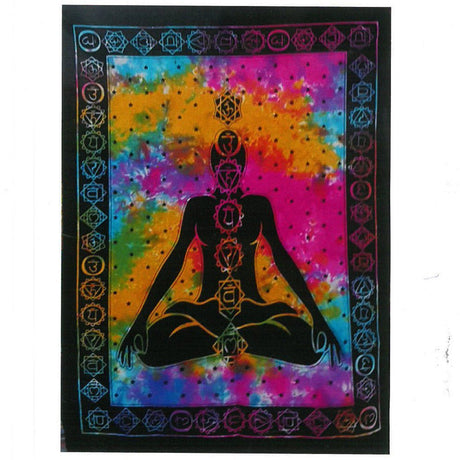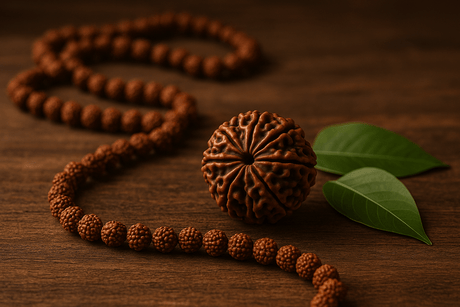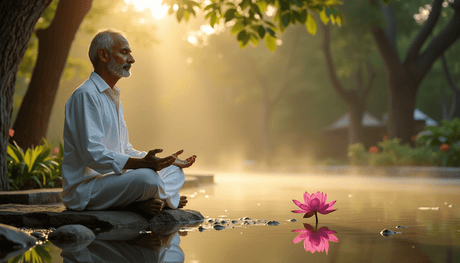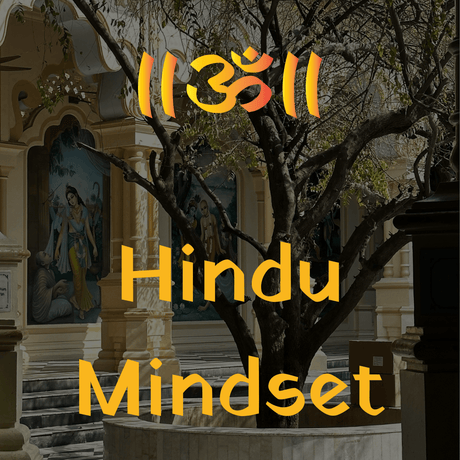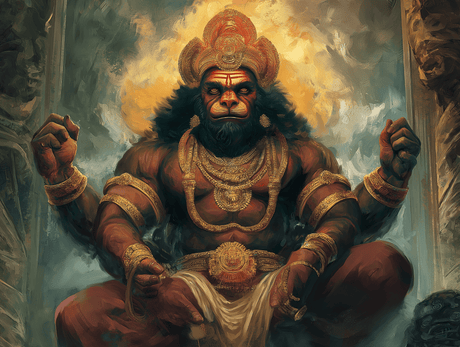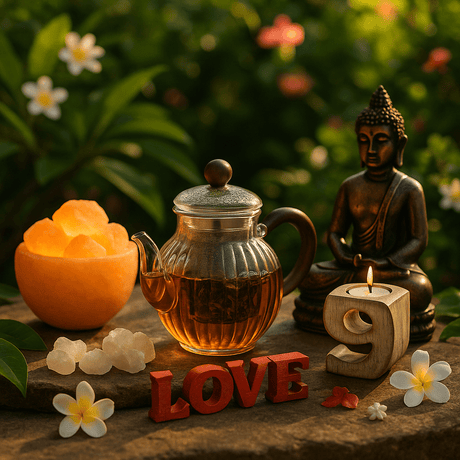Yoga is a deep and multifaceted practice that transcends mere physical exercises and postures. Its core philosophy is embodied in the 8 Limbs of Yoga, as delineated in Patanjali's Yoga Sutras. This eightfold path, known as Ashtanga (derived from the Sanskrit words "ashta" meaning eight and "anga" meaning limbs or steps), encapsulates the true essence of yoga's holistic approach.
The Eight Limbs of Yoga
The 8 Limbs of Yoga provide a structured path for personal growth and spiritual development. They are not meant to be mastered in a linear fashion, but rather a framework to be explored and integrated into our lives over time.
- Yama (Ethical Standards). These are the moral guidelines for our interactions with the world around us. They include principles like non-violence (ahimsa), truthfulness (satya), non-stealing (asteya), non-excess (brahmacharya), and non-possessiveness (aparigraha).
- Niyama (Self-Discipline). These are personal observances that cultivate inner discipline and self-respect. Examples include cleanliness (saucha), contentment (santosha), self-discipline (tapas), self-study (svadhyaya), and surrender to the divine (Ishvara Pranidhana).
- Asana (Postures). This is the aspect of yoga most familiar in the West. Asanas are physical postures designed to strengthen and purify the body, improve flexibility, and prepare it for meditation.
- Pranayama (Breathing Techniques). Pranayama focuses on the control of breath, recognizing the vital connection between breath and our mental and emotional state. By mastering Pranayama, we can cultivate calmness, focus, and inner peace.
- Pratyahara (Sense Withdrawal). This limb involves withdrawing our senses from external stimuli, turning our attention inward. It allows us to disengage from distractions and focus on our inner world.
- Dharana (Concentration). Here, we learn to direct and sustain our attention on a single point, such as the breath, a mantra, or an object. Dharana strengthens our ability to focus and prepares us for meditation.
- Dhyana (Meditation). Dhyana is a state of deep meditative absorption. In this state, the mind becomes effortlessly focused and transcends thoughts and worries.
- Samadhi (Union). Samadhi is the ultimate goal of the Yoga Sutras. It is a state of complete union or oneness with the divine, where the separation between self and other dissolves.
Historical Background of The Eight Limbs of Yoga
The 8 Limbs of Yoga were codified by Maharishi Patanjali in his seminal text, the Yoga Sutras, estimated to be written around 400 CE. The word sutra means "to thread or weave," suggesting how these 196 aphorisms (short, insightful sayings) interconnect to create a comprehensive philosophy.
The Yoga Sutras are divided into four sections, with the second section, Sadhana Pada (The Book of Spiritual Practice), outlining the eight limbs of yoga (sutra 2.29). Patanjali presented this eightfold path as a guide to overcome human suffering and achieve self-realization (Sanskrit: सविकल्प समाधि, savikalpa samadhi).
The original Sanskrit text for the 8 limbs of Yoga, as referenced in Sutra 2.29, is:
- यमनियमासनप्राणायामप्रत्याहारधारणाध्यानसमाधयोऽष्टावङ्गानि ॥ २.२९॥ (Yama niyama asana pranayama pratyahara dharana dhyana samadhi ashtau angani || 2.29 ||)
These eight limbs work together to cultivate a harmonious mind, body, and spirit, ultimately leading to a state of complete well-being and liberation.

🪷 Yama – Ethical Standards
The foundation of the yogic path lies in Yama, the ethical principles that guide our interactions with the world around us. These aren't just rules, but moral imperatives that cultivate a sense of right conduct. Yama requires tremendous inner discipline, for it asks us to embody values like:
- Ahimsa (अहिंसा). Non-violence, non-aggression, and compassion in all our thoughts, words, and actions.
- Satya (सत्य). Truthfulness and honesty in our communication and dealings with others.
- Asteya (अस्तेय). Non-stealing, extending not just to physical possessions but also to time, energy, and ideas.
- Brahmacharya (ब्रह्मचर्य). Moderation in all aspects of life, particularly regarding sensual pleasures. It emphasizes self-restraint and control of the senses.
- Aparigraha (अपरिग्रह). Non-greed and non-attachment. This principle encourages us to find contentment with what we have and avoid the accumulation of material possessions.
🪷 Niyama – Self-Discipline
Niyama, the second limb, focuses on cultivating self-discipline through personal observances. These practices help us cultivate positive habits and refine our character. Niyama helps us overcome laziness and strengthens our resolve to follow the yogic path. The five Niyamas are:
- Saucha (शौच). Cleanliness, encompassing physical cleanliness, but also purity of mind and speech.
- Santosha (संतोष). Contentment and acceptance. It's about finding joy in what we have and appreciating the present moment.
- Tapas (तपस्). Self-discipline, perseverance, and a commitment to self-improvement. It requires dedication and effort on our yoga journey.
- Svadhyaya (स्वाध्याय). Self-study and introspection. This involves studying yogic texts, reflecting on our thoughts and actions, and gaining a deeper understanding of ourselves.
- Ishvarapranidhana (ईश्वरप्रणिधान). Surrender to the divine, a higher power, or a deeper purpose in life. It's about letting go of the need to control and trusting in a bigger picture.
🪷 Asana – Physical Postures
Asana, the most recognizable aspect of yoga in the West, refers to the practice of physical postures. The word "asana" itself literally means "seat" or "sitting posture" in Sanskrit.
While there are many postures suitable for meditation, the most important aspect is finding a posture (Sthira Sukhasana) that allows you to be steady, comfortable, and motionless.
At a deeper level, Asana is about integrating the mind, body, and spirit. Holding these postures helps us move our awareness from the physical body towards the consciousness of the soul.
It's important to remember that Asana is just one aspect of the eightfold path. While it offers a multitude of physical and mental benefits, true yogic transformation comes from integrating all eight limbs.
🪷 Pranayama – Breath Control
Pranayama, the fourth limb of yoga, focuses on the control and regulation of breath. The word "pranayama" is derived from two Sanskrit words: "prana" meaning "breath" or "life force" and "ayama" meaning "control" or "regulation."
Breath is the foundation of life, and Pranayama recognizes the profound connection between our breath and our mental and emotional state. By mastering Pranayama, we can cultivate calmness, focus, and inner peace.
There are numerous Pranayama techniques, each with its unique benefits. Some common practices include:
- Ujjayi Pranayama (Victorious Breath). This technique involves constricting the throat slightly to create a gentle hissing sound during inhalation and exhalation.
- Nadi Shodhana (Alternate Nostril Breathing). This practice involves alternating breathing through the left and right nostrils, believed to balance the hemispheres of the brain.
- Kapalbhati (Skull Shining Breath). This vigorous breathing technique involves rapid, forceful exhalations followed by passive inhalations.
Pranayama is a powerful tool for self-transformation. By regulating our breath, we can quiet the mind, enhance our energy levels, and improve our overall well-being.
🪷 Pratyahara – Sense Withdrawal
Pratyahara, the fifth limb, involves withdrawing our senses from external stimuli, turning our attention inward. It's about disengaging from distractions and focusing on our inner world.
There are various techniques for practicing Pratyahara, including:
- Gazing at a single point (Trataka). This involves focusing intently on an object, such as a candle flame or a mandala, to calm the mind and reduce distractions.
- Closing the eyes and focusing on the breath. This simple practice helps to anchor our attention within and cultivate inner awareness.
- Disengaging from external sounds. This involves practicing in a quiet environment or using earplugs to minimize external auditory distractions.
Pratyahara is an essential step on the yogic path, as it prepares us for deeper states of meditation and self-discovery.
🪷 Dharana – Concentration
Dharana, the sixth limb, is the practice of focused concentration. It involves directing and sustaining our attention on a single point, such as the breath, a mantra, or an object.
Dharana trains the mind to stay focused and resist distractions. This ability to concentrate is crucial for deeper meditation and self-realization.
There are various techniques for practicing Dharana, including:
- Repeating a mantra. This involves silently or audibly repeating a word or phrase, such as "Om" or a personal affirmation.
- Focusing on the breath. This involves observing the natural flow of breath without trying to control it.
- Visualizing an object. This involves focusing on a mental image, such as a flower, a symbol, or a divine form.
🪷 Dhyana – Meditation
Dhyana, the seventh limb, is the state of deep meditative absorption. In this state, the mind becomes effortlessly focused and transcends thoughts and worries.
Dhyana is often referred to as "meditation" in the West, but it is more than just sitting quietly. It is a state of pure consciousness, where the mind is still and the self dissolves.
There are various techniques for achieving Dhyana, but they all share the common goal of stilling the mind. Some common practices include:
- Transcendental Meditation (TM). This technique involves silently repeating a mantra to transcend thoughts and reach a state of pure consciousness.
- Vipassana Meditation (Insight Meditation). This technique involves observing the arising and passing of thoughts, sensations, and emotions without judgment.
- Zazen Meditation (Zen Meditation). This technique involves sitting in silence, focusing on the breath or simply observing the present moment.
🪷 Samadhi – Union
Samadhi, the eighth and final limb of yoga, is the state of complete union or oneness with the divine. In this state, the separation between self and other dissolves, and the individual experiences a sense of boundless consciousness.
Samadhi is not a state that can be achieved through effort or willpower. It is a state of grace that arises from years of dedicated yogic practice and self-realization.

The Purpose of the 8 Limbs of Yoga
The ultimate purpose of the 8 Limbs is to achieve Samadhi, a state of complete union or oneness with the divine. However, the journey itself is transformative. By cultivating the ethical principles of Yama and Niyama, we establish a foundation of right conduct and self-discipline. Asana (postures) and Pranayama (breath control) prepare the body and mind for meditation. Pratyahara (withdrawal of senses), Dharana (concentration), and Dhyana (meditation) refine our focus and lead us to a state of inner stillness.
Practices of Ashtanga Yoga
Ashtanga Yoga, a vigorous and structured form of yoga, is based on the teachings of Sri K. Pattabhi Jois. It follows a set sequence of postures (asanas) practiced in a specific order with synchronized breath (vinyasa). There are six series in Ashtanga Yoga, progressively increasing in difficulty. The first three series are the most commonly practiced:
- Primary Series (Yoga Chikitsa). This foundational series focuses on detoxification and purification of the body and mind. It is considered therapeutic and suitable for beginners.
- Intermediate Series (Nadi Shodhana). This series builds upon the Primary Series, introducing more challenging postures and deeper twists to purify the energy channels (nadis).
- Advanced Series (Sthira Bhaga & Sthira Bhaga III). These advanced series require a strong and flexible body and are only attempted by experienced practitioners under the guidance of a qualified teacher.
Ashtanga Yoga emphasizes a disciplined and consistent practice. Students typically practice the same series for an extended period before progressing to the next level. This repetitive practice allows the body to build strength and flexibility, while also cultivating mental focus and discipline.

Why Practice the 8 Limbs of Yoga?
The 8 Limbs of Yoga offer a transformative path towards a life of peace, clarity, and self-discovery. But why should we embark on this journey? The answer lies in the profound benefits it brings to every aspect of our being.
Unveiling Our True Selves
Sage Patanjali himself, in Sutra 2.29, tells us:
Yoga anga anushtanat ashuddhi kshaye jnanadi Apthiraviveka khyatehe (2. 28) By the sustained practice of the eight limbs of yoga, the impurities are destroyed and the light of wisdom, discrimination shines forth.
As we integrate the eight limbs into our lives, they act as a powerful tool for self-exploration. They chip away at the "impurities" – negative thoughts, habits, and patterns – hindering our true potential. This process allows the "light of wisdom" to shine through, revealing our authentic selves.
A Holistic Approach
Unlike approaches that focus solely on the physical or mental aspects of being, the 8 Limbs encompass all dimensions of ourselves. They are not separate steps, but rather interconnected practices that work together:
- Ethical principles (Yama & Niyama) form a strong foundation for right conduct and self-discipline.
- Physical postures (Asana) and breath control (Pranayama) prepare the body and mind for meditation.
- Sense withdrawal (Pratyahara), concentration (Dharana), and meditation (Dhyana) refine our focus and lead us to inner stillness.
A Path of Transformation
The 8 Limbs are not a quick fix, but a dedicated practice that unfolds over time. As we persevere, we experience a multitude of benefits:
- Physically. Increased strength, flexibility, and overall well-being.
- Mentally. Enhanced focus, reduced stress, and improved emotional regulation.
- Spiritually. Cultivated self-awareness, a deeper connection with the present moment, and an expanded sense of purpose.
Unveiling the Gift Within
The 8 Limbs are like the eight legs of a chair – each one supporting the entire structure. When practiced together, they create a powerful synergy that leads to profound transformation. As Gurudev Sri Sri Ravi Shankar beautifully explains,
Yoga has eight limbs like a chair which has got four legs. So if you pull one, everything else will come. [...] When the body is developing, the whole body develops together. That is why Patanjali says that these are all the limbs of yoga (not steps of yoga).
Conclusion 🪷
Yoga offers a path far deeper than just physical postures. The 8 Limbs of Yoga, outlined by Patanjali, provide a comprehensive framework for personal growth and self-discovery. By integrating ethical principles, physical discipline, breath control, and meditation into our lives, we cultivate a sense of peace, clarity, and connection with our truest selves.
Yoga is the journey of the self, to the self, through the self.
May your yoga practice be a journey of continuous learning, growth, and self-discovery.
























